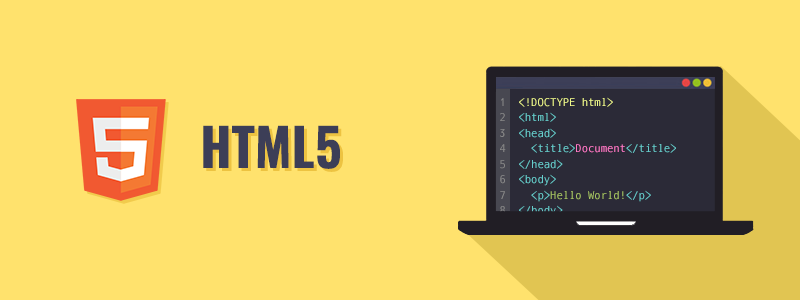HTML is the main markup language for describing the structure of web pages.

HTML stands for HyperText Markup Language. HTML is the basic building block of World Wide Web.
Hypertext is text displayed on a computer or other electronic device with references to other text that the user can immediately access, usually by a mouse click or key press.
Apart from text, hypertext may contain tables, lists, forms, images, and other presentational elements. It is an easy-to-use and flexible format to share information over the Internet.
Markup languages use sets of markup tags to characterize text elements within a document, which gives instructions to the web browsers on how the document should appear.
HTML was originally developed by Tim Berners-Lee in 1990. He is also known as the father of the web. In 1996, the World Wide Web Consortium (W3C) became the authority to maintain the HTML specifications. HTML also became an international standard (ISO) in 2000. HTML5 is the latest version of HTML. HTML5 provides a faster and more robust approach to web development.
Note: All elements don’t require the end tag or closing tag to be present. These are referred as empty elements, self-closing elements or void elements.
What You Can Do with HTML
There are lot more things you can do with HTML.
- You can publish documents online with text, images, lists, tables, etc.
- You can access web resources such as images, videos or other HTML document via hyperlinks.
- You can create forms to collect user inputs like name, e-mail address, comments, etc.
- You can include images, videos, sound clips, flash movies, applications and other HTML documents directly inside an HTML document.
- You can create offline version of your website that work without internet.
- You can store data in the user’s web browser and access later on.
- You can find the current location of your website’s visitor.
Tip: We recommend using lowercase for tag and attributing names in HTML, since by doing this you can make your document more compliant for future upgrades.
HTML Elements Types
Elements can be placed in two distinct groups: block level and inline level elements. The former make up the document’s structure, while the latter dress up the contents of a block.
Also, a block element occupies 100% of the available width and it is rendered with a line break before and after. Whereas, an inline element will take up only as much space as it needs.
The most commonly used block-level elements are <div>, <p>, <h1> through <h6>, <form>, <ol>, <ul>, <li>, and so on. Whereas, the commonly used inline-level elements are <img>, <a>, <span>, <strong>, <b>, <em>, <i>, <code>, <input>, <button>, etc.
